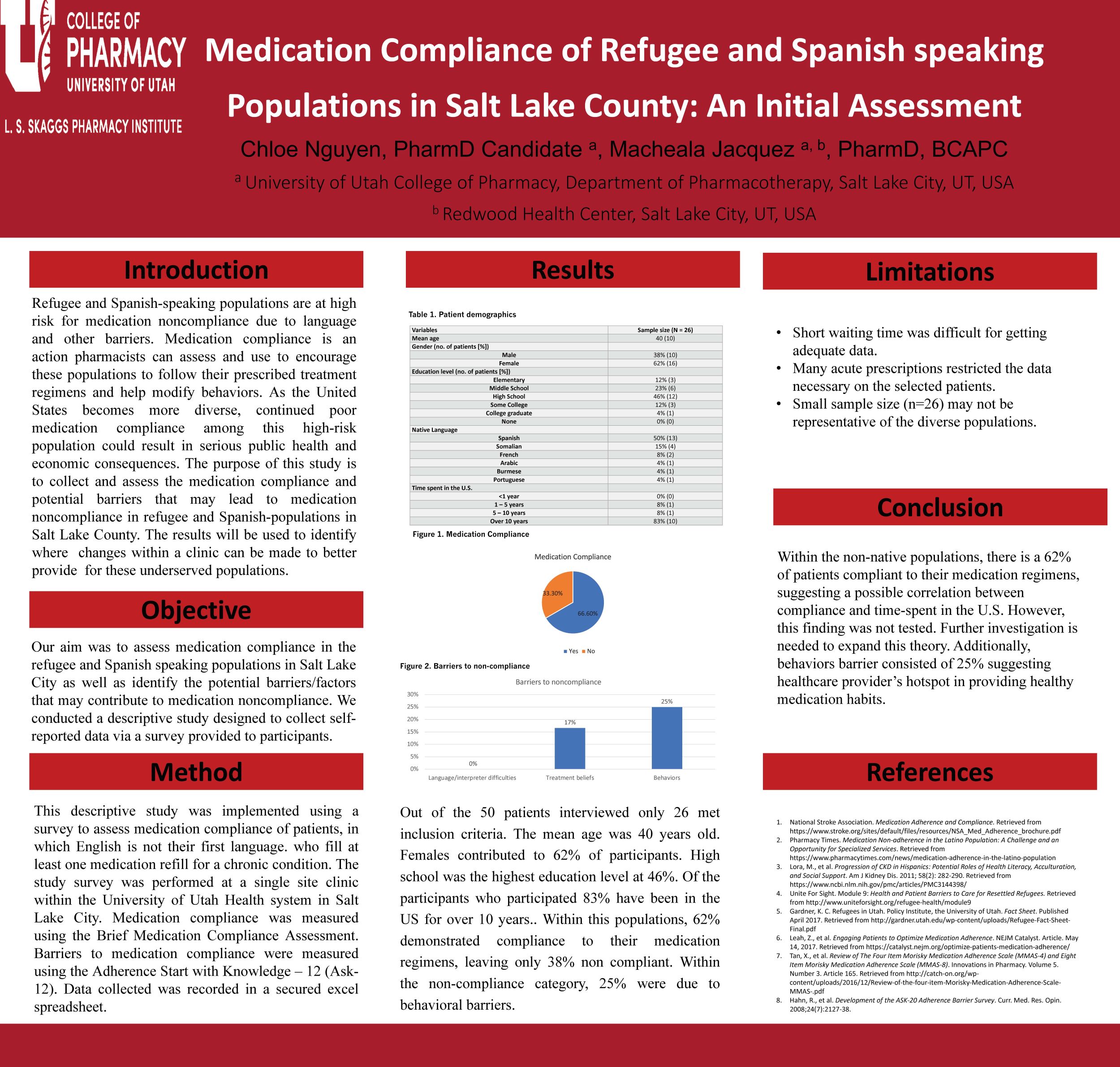Nguyen Chloe
Medication Compliance of Refugee and Spanish speaking Populations in Salt Lake County: An Initial Assessment
April 29, 2020 in College of Pharmacy, Virtual Poster Session Spring 2020

Abstract
Purpose: Refugee and Spanish-speaking populations are at high risk for medication noncompliance due to language and other barriers. Medication compliance is an action pharmacists can assess and use to encourage these populations to follow their prescribed treatment regimens and help modify behaviors. As the United States becomes more diverse, continued poor medication compliance among this high-risk population could result in serious public health and economic consequences. The purpose of this study is to collect and assess the medication compliance and potential barriers that may lead to medication noncompliance in refugee and Spanish-populations in Salt Lake County. The results will be used to identify where changes within a clinic can be made to better provide for these underserved populations.
Methods: This descriptive study was implemented using a survey to assess medication compliance of patients, in which English is not their first language. who fill at least one medication refill for a chronic condition. The study survey was performed at a single site clinic within the University of Utah Health system in Salt Lake City. Medication compliance was measured using the Brief Medication Compliance Assessment. Barriers to medication compliance were measured using the Adherence Start with Knowledge – 12 (Ask-12). Data collected was recorded in a secured excel spreadsheet.
Results: Out of the 50 patients interviewed only 26 met inclusion criteria. The mean age was 40 years old. Females contributed to 62% of participants. High school was the highest education level at 46%. Of the participants who participated 83% have been in the US for over 10 years.. Within this populations, 62% demonstrated compliance to their medication regimens, leaving only 38% non compliant. Within the non-compliance category, 25% were due to behavioral barriers.
Conclusion: Within the non-native populations, there is a 62% of patients compliant to their medication regimens, suggesting a possible correlation between compliance and time-spent in the U.S. However, this finding was not tested. Further investigation is needed to expand this theory. Additionally, behaviors barrier consisted of 25% suggesting healthcare provider’s hotspot in providing healthy medication habits.
